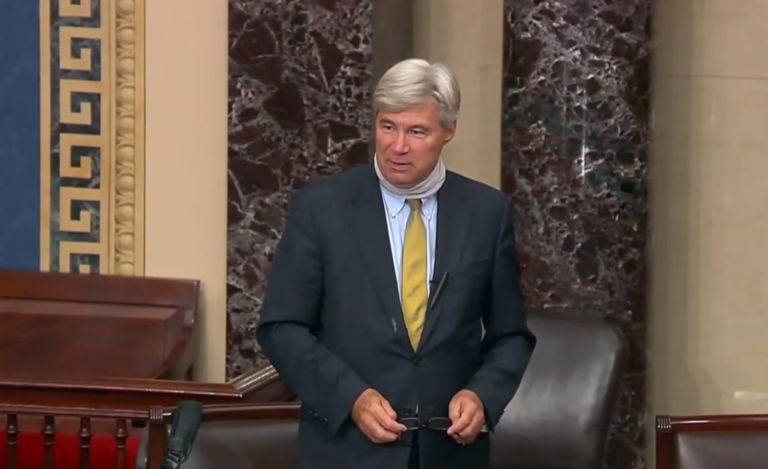How did George Washington die? What felled the mighty general? What brought down the first president of the United States, the New Cincinnatus, the Pater Patriae, the Friend of Commerce, the Man for the Milleniums, the World’s Apostle of Liberty?
The affliction Washington contracted was most likely acute epiglottitis, but what really killed him was that he was medicinally bled to death. Phlebotomy (i.e., bloodletting) being a prevailing practice of medicine in Washington’s time, the president and his doctors believed the notion that bleeding a patient was necessary to restore the body’s proper balance of the humors, by which restoration to health would follow. The use of leeches (and later of mechanical leeches) followed from this idea.
Washington was bled repeatedly during his final hours. As historian Lewis Lehrman described it, "Washington did not lack for the best medical care, but unfortunately for Washington that included ‘bleeding’ him of nearly half his blood."
The loss was senseless, made worse by the knowledge in hindsight that the best experts available to Washington adhered to a theory that was flat, dead wrong.
Today, the country Washington fought to establish is suffering from an acute recession. For years the nation has been losing jobs and workers, despite a vigorous application of the prevailing economic nostrums by top Washington experts. Predictably, they greet every new jobs report with declamations about how unexpected the bad news is.
Meanwhile, they try to make it sound as if a slight decrease in unemployment is good news, despite its decline owing not to more people finding work, but to more people leaving the job market entirely. If the same number of people were in the job market today as they were in January 2009, that 8.1 percent unemployment figure would be 11.2 percent. And the kicker: they predicted that the stimulus plan would have unemployment down to 5.8 percent by now; 5.9 percent had there been no stimulus.
A disturbing report in Investors Business Daily reveals that more bleeding is on the way — over $515 billion’s worth of new regulatory costs desired by the Obama administration, awaiting his reelection:
Using official government sources, the National Federation of Independent Business calculates there are more than 4,000 federal rules in the pipeline, and that just the 13 biggest ones would, if imposed in an Obama second term, cost businesses a total of more than $515 billion over four years.
Even bleaker, that staggering drain on a struggling economy "doesn’t include more than 100 still-to-be-written regulations needed to enforce the Dodd-Frank financial reform law, or the mountain of regulations required by ObamaCare."
North Carolina would not be spared: estimates are that the new regulations would adversely impact nearly 800,000 workers and $107 billion’s worth of the state’s gross domestic product.
As it is, federal regulations and the Obama administration’s own declared desire to bankrupt and "crucify" coal power plants, which would help fulfill the president’s vision from his 2008 candidacy of electricity rates that would "necessarily skyrocket," are already hitting poor areas hard, throwing hundreds out of work and indeed necessarily skyrocketing energy prices on those least able to afford them.
The harm to North Carolina is blithely reported by The News & Observer, which resorts to the phrase "but dirty" to modify the fact that coal is an inexpensive energy source:
Progress Energy’s planned shutdown Saturday of its aging H.F. Lee power plant near Goldsboro marks the beginning of a major wave of closures of coal-burning plants dating back to 1949. … In all, Progress is demolishing a dozen coal-burning units at five sites, including one in Chatham County. Progress, a subsidiary of Charlotte-based Duke Energy, announced its coal-abandonment strategy in 2009 in response to expected federal caps on greenhouse gases and stricter limits on pollution. …
Progress is eliminating about one-third of its total coal-burning capacity, leaving only its around-the-clock giant workhorses to run on coal. The mostly older, smaller plants that operate part-time will be demolished and taken to the scrap heap, rather than investing $2 billion in retrofitting them with scrubbers and catalytic converters.
Their place will be taken by a trio of newly built plants that also will cost about $2 billion but instead will burn natural gas, which emits half the carbon dioxide of coal and is lower in other pollutants.
Note that changing federal regulations created out of thin air a "need" for $2 billion’s worth in changes to energy production, one way or another. That is $2 billion that would have gone to other uses — new and productive uses — but now will never do so; i.e., a $2 billion loss in investment and job creation going instead to unnecessary replacement, the economic equivalent of spinning our wheels and going nowhere (while losing $2 billion). It’s tempting to say Crucified Coal has replaced Broken Windows as the phlebotonomists’ fallacy of choice, were they not so invested in breaking, then "fixing" so many other industries at such great costs to society.
Epilogue
Feverish, weakened by multiple vein opening, the World’s Apostle of Liberty told his wrongheaded doctors, "I die hard." It is not a fate to be wished for the land of liberty. The expression "death by a thousand cuts" originally referred to a particularly brutal Chinese torture. But now our economy faces four thousand plus regulatory stabs, and untold numbers of workers in North Carolina fear the unkindest cut of all.
Click here for the Rights & Regulation Update archive.


